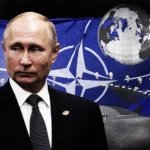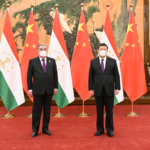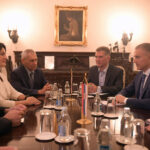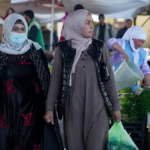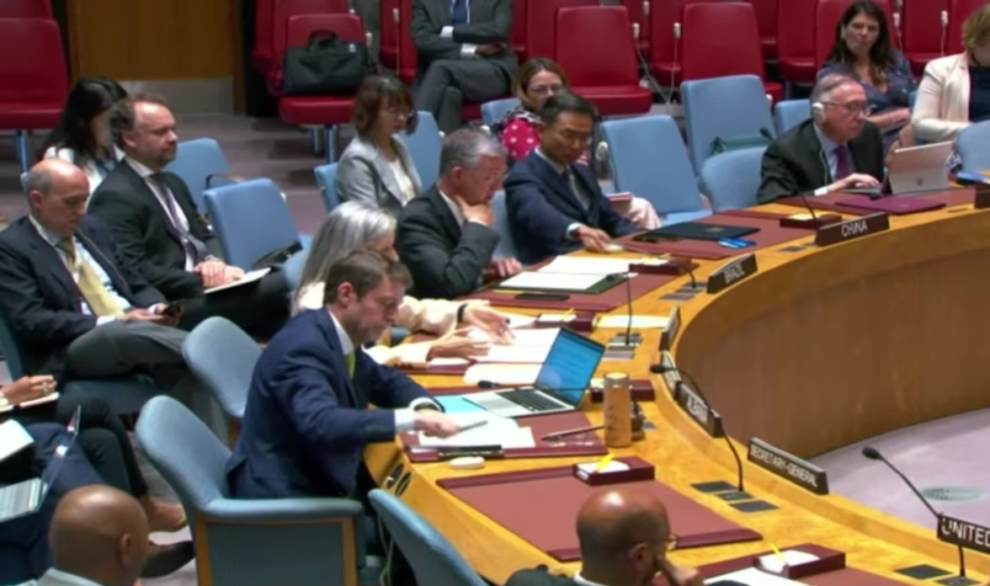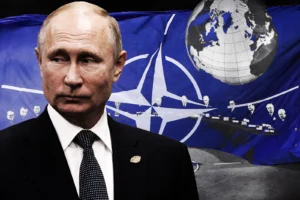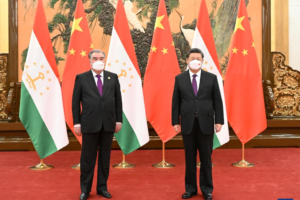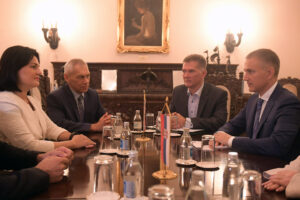The war in Ukraine is likely to be the big topic for a second year when leaders gather at the U.N. General Assembly next week, but many developing countries are hoping to shine a light on issues important to them, including development, the economy and climate.
This year’s general assembly will take place after Asian countries met in Indonesia for the ASEAN summit, G20 leaders gathered in India, and developing countries in the Group of 77 plus China met in Cuba. After a busy September, several high-profile leaders are skipping New York, but more than 140 heads of state and government are attending.
With the world literally on fire in places, there will be plenty to talk about.
“We will be gathering at a time when humanity faces huge challenges – from the worsening climate emergency to escalating conflicts, the global cost-of-living crisis, soaring inequalities and dramatic technological disruptions,” U.N. Secretary-General Antonio Guterres told reporters ahead of the high-level week. “People are looking to their leaders for a way out of this mess.”
War in Ukraine
Guterres said the war in Ukraine is aggravating geopolitical divisions.
“And so, the solution — a peace in Ukraine, in line with [the] U.N. Charter, and in line with international law — would be very important to allow for geopolitical divisions to be reduced,” he said. “But those geopolitical divisions have other dimensions. And one of my main concerns is that we see the risk of fragmentation.”
The war is certain to be a feature during the week, with media attention on Ukrainian President Volodymyr Zelenskyy, who is scheduled to attend the U.N. General Assembly in person for the first time since Russia invaded his country in February 2022. Last year a special exception was made for him to address the gathering in a prerecorded video because he could not travel to New York.
In addition to his General Assembly speech Tuesday, he is expected to attend a high-level U.N. Security Council meeting the next day on Ukraine. Zelenskyy has previously only briefed the council remotely since the war started. There is also potential for some diplomatic drama, if Russian Foreign Minister Sergey Lavrov represents his country at the meeting and the two leaders come face-to-face in the same room.
Richard Gowan, U.N. director at the International Crisis Group, says Zelenskyy is likely to get a lot of press attention, but he should be careful not to overshadow the priorities of other leaders, especially from the developing world.
“I think this is a great opportunity for Zelenskyy to talk to the wider world about Ukraine’s situation and try and push back against some of the Russian propaganda about the war,” he told VOA. “However, Zelenskyy has to be conscious that there are a lot of leaders from developing countries who have problems of their own – such as debt and poor economic growth – and they want to talk about those topics, and not just the war between Russia and Ukraine.”
Push for SDGs
What leaders from developing nations are hoping for is real action on sustainable development, climate mitigation and adaptation, and pandemic prevention and preparedness. There will be separate summits on all those issues during the week.
Guterres will kick off the high-level week with a two-day summit on Sustainable Development Goals, or SDGs.
In 2015, leaders pledged to work toward progress on 17 goals that aim to end hunger and extreme poverty. Now at the half-way point to the 2030 deadline, only 15% of the SDGs are on track. The rest are either making too little progress or backsliding to pre-2015 levels.
“This is in part due to the lingering drag of the COVID-19 pandemic, the highest level of armed conflict globally since 1945, and climate-related disasters, as well as inflation and the rising cost of living,” said Astra Bonini, U.N. senior sustainable development officer.
The number of people living in extreme poverty rose for the first time in a generation with the onset of the pandemic. The U.N. says if present trends continue, a staggering 575 million people will remain trapped in extreme poverty by the end of this decade and 600 million will be facing hunger.
Guterres told reporters that getting the SDGs back on track is his main objective during the week. A big part of that is financing, and he hopes to secure an ambitious commitment of $500 billion a year from nations to help “rescue” the SDGs.
“I’m very hopeful that the SDG Summit will indeed represent a quantum leap in the response to the dramatic failures that we have witnessed until now in relation to the implementation of the SDGs,” he said.
Leaders are expected to adopt a political declaration at the start of Monday’s summit committing “to bold, ambitious, accelerated, just and transformative actions” to meet the targets by the end of this decade.
On Wednesday, the secretary-general is convening a climate ambition summit, bringing together government leaders with representatives from business and civil society. He has repeatedly warned that time is running out to prevent a climate catastrophe.
On the health front, leaders will discuss lessons learned from COVID-19 during the pandemic prevention, preparedness and response meeting, also on Wednesday. In addition to focusing on elements like vaccination programs and supporting healthcare systems, the meeting will look at the health inequalities and inequities among countries that need attention.
“If COVID-19 taught us nothing else, it’s that when health is at risk, everything is at risk,” said Tedros Adhanom Ghebreyesus, World Health Organization director-general, of the social, economic and political impacts of the pandemic.
Out of the spotlight
“The gathering itself isn’t the game, the game is what happens on the sidelines and behind-the-scenes that matters when everyone is in town,” said Richard Goldberg of the Washington-based research group Foundation for Defense of Democracies.
To that point, there will be hundreds of meetings on the sidelines of the General Assembly. There will be bilateral meetings between leaders – Secretary-General Guterres usually has more than a hundred of those himself. Smaller meetings on pressing issues will also take place. Look for the humanitarian situation in Sudan, the security crisis in Haiti, and how to help Rohingya Muslim refugees in Bangladesh to be a focus in smaller format sessions.
There will also be a ministerial meeting Monday hosted by the European Union, Saudi Arabia and the Arab League to see what’s possible on relaunching the stalled Middle East peace process. Israel and the Palestinians have not been invited.
U.S. President Joe Biden is the only leader from the five U.N. Security Council powers attending this year’s General Assembly. The British prime minister and the French, Russian and Chinese presidents are sitting out the gathering for various reasons.
“That’s a missed opportunity for the U.S.,” FDD’s Goldberg says.
President Biden will speak Tuesday morning, laying out U.S. priorities.
“He will address the General Assembly, where he will reaffirm our country’s leadership in countering threats to international peace and security, protecting human rights, and advancing global prosperity and development,” U.S. Ambassador to the U.N. Linda Thomas-Greenfield told reporters Thursday.
She said the United States will also reaffirm its commitments to the SDGs and discuss how they are working to meet them.
With a packed week and much on the line, the world’s citizens will be looking to leaders to take action to improve their daily lives and safeguard their future.
Source : VOA News

